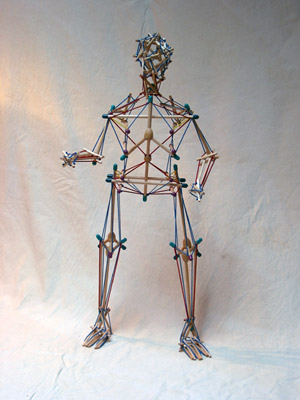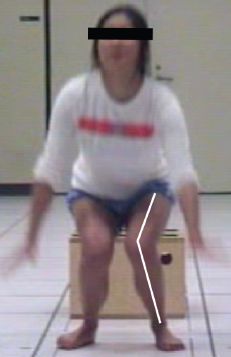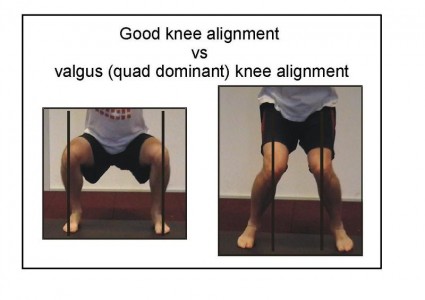You’re not a bear
and
It’s not the F-ing circus.
So why are you standing on top of a ball like one?
“Cause it’s balance training”
That’s what everyone says even though it’s completely stupid……
Balance, the type used in the real world, occurs on a stable (usually) flat surface. So how in the hell is standing on an inflatable disc training balance?
Quite simply…..it’s not…
Well, that’s not entirely true. Standing on inflatable balls and discs will make you better at…..
Standing on inflatable balls and disks…..because we know that balance (like most skills) is skill specific.
So you’ll be gravy when walking through the moon bounce but it won’t do much for you the other 99.999999% of the time.
Why?
Quick physiology lesson, UST (unstable surface training) does several “different” things from stable surface training:
- UST changes the angles of the joints throughout the kinetic chain (head to toe)
- UST forces an overload on the “stabilizers” which because of the size principle means that large (primary mover) muscle groups must pitch in to help stabilize the joint.
- This forces an overall decrease in power and force output under the same conditions on a stable surface.
So basically unstable surfaces suck to train on.
Yeah, you might hop around on a Bosu cause your fraud of a weekend certification Yoda trainer told you to do it, and hell it’s probably pretty hard and I’m guessing you got tired….but it’s not really helping do much of anything……except…..
make you tired and maybe worse,
These results indicate that UST using inflatable rubber discs attenuates performance improvements in healthy, trained athletes. Such implements have proved valuable in rehabilitation, but caution should be exercised when applying UST to athletic performance and general exercise scenarios. – Cressey, West, Tiberio, Kraemer, Maresh (emphasis mine)
Here’s the thing, the body is an interconnected matrix of muscles, bones, tendons, ligaments and fascia. Based on the nerve responses some of those tighten while others relax, some shorten while others lengthen all in an interplay to keep you sitting, standing, walking etc.
The model the best represents this is the,
Tensegrity Model:
As a pull, shortening or change in the angle of one joint happens it’s pretty easy to see how other joints could be affected.
This is the problem with the circus style balancing act as training.
It throws off how the body is supposed to operate. We’re not training balance we’re simply redistributing the loads and readjusting the joint angles to make up for the unstable surface.
Real World Balance Training:
The best thought I’ve heard on balance training is that balance is really the interplay of internal and external rotators at a joint.
Think inside and outside muscles of the hip or ankle.
When these are not working in unison to keep the joint centered (think; ankle joint when standing on one foot) someone loses their balance.
So what keeps these muscles from working equally?
Usually it’s just a matter of strength.
One set of muscles is stronger than the other and pulls the “model”/ body out of alignment. You see the muscles, and fascia, act as guy wires on the bones similar to the ones that help stabilize towers. Obviously, if one of these wires had a stronger pull on the tower than those on the other sides the tower would slowly lean and eventually come down.
This is exactly how balance works in the body.
As some muscles exert force on bones other (weaker, under active) muscles are not exerting enough force to counteract and keep the joint centered.
Therefore, a movement we don’t want to happen occurs and we lose our “balance”.
What you can do:
Weight train, with free weights, not machines, through a FULL RANGE OF MOTION…..feet on the floor (single leg exercises are fine too)
Free weights force the body stabilize the joints as they must in the real world, you know the one where a steel frame isn’t constructed for you to do something worthless that mimics doing something useful.
A full range of motion makes sure that all of the muscles that surround a moving joint are forced to do something during that exercise. Most people don’t realize that the recruitment and force producing contributions of various muscles change throughout a movement.
If you need proof : Do 100 half squats with 50 percent of your max today. Tomorrow, you’ll have sore quads and it’ll be uncomfortable to walk..
Next week, come back and do 100 full squats, I’m talking so low you leave a stain on the floor (yepper, that type of stain), with that same weight and I betting your ass will be so sore you’ll be standing at your desk and sleeping on your stomach for a couple of days.
Same basic movement, different range of motion, different muscle contributions.
So what the hell do I do cause I have really bad balance?
In my personal experience this usually means or is accompanied by, “I’m really weak”….so get stronger using 2 leg exercises like squats and deadlifts.
But if you already have a good base of strength I would focus on single leg exercises.
Master them in this order…..
Step Up:
Split Squat:
Bulgarian Split Squat:
Reverse Lunge:
In this order we go from most stable base to least stable base…..increasing the need for the internal and external rotators of the hip to work equally. through a larger range of motion.
With all of these exercises it’s important to line the feet up with the hips. Don’t put the “ground” or “push” foot toward the mid-line of the body. Keep it in line with the hip.
and control the knee…as in DON’T LET IT CAVE IN!!….keep the knee lined up over the toe….
This shit is bad…very, very, can’t stress it enough, will-mess-you-up, type of bad…don’t do it…
Think toes, ankle, knee, hip all in one straight line….
Here’s a good comparison:
Do like the left picture….knees over toes.
I know the hip isn’t in line, that’s because it’s a squat pattern but I’m sure you get the gist of it.
Once you do these for a couple of weeks I guarantee your balance will improve.
If not, you can always go back to doing one-legged, baton juggling, hula hooping while standing on a Bosu ball.
and if you’re lucky maybe next time you can jump through a ring of fire while having flaming arrows shot at you by monkeys.
I hear that’s good for “agility” training.
*I would just like to say that I personally have never done one-legged, baton juggling, hula hooping while standing on a Bosu ball. But I’m sure it’s really hard….






[…] “Balance Training”: […]